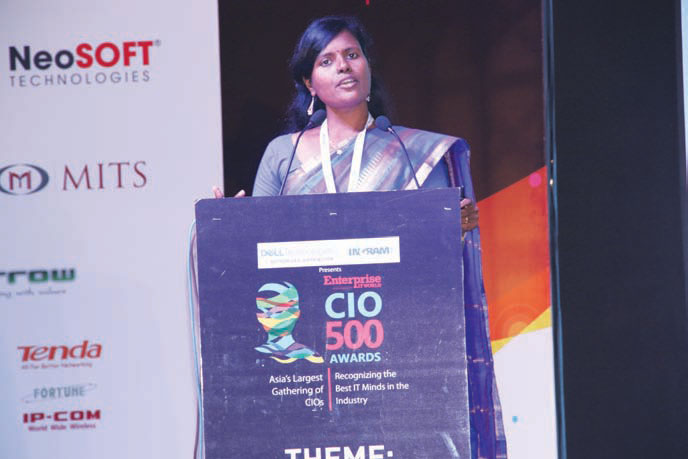Rajalakshmi Srinivasan, Product Manager, Evangelist, Site24x7
Rajalakshmi Srinivasan, Product Manager, Evangelist, Site24x7, in her keynote address on ‘Adoption, Ability and Awareness to Survive and Thrive’ elaborates on the nature of the technology adoption that a business should strive towards.
With new businesses coming up in India every year, the market out there is getting increasingly competitive. All these businesses are in different stages of digital transformation. So, when you are embracing technology in your business, what should you focus on? Is it merely about implementing technology or is it more inclined towards adding value to it?
Rajalakshmi Srinivasan, Product Manager, Evangelist, Site24x7, in her keynote address on ‘Adoption, Ability and Awareness to Survive and Thrive’ elaborates on the nature of the technology adoption that a business should strive towards.
“While implementing technology, don’t be obsessed with using technology in a breakthrough and pioneering way, instead see how you can bridge the past and the future. Look back as well as look forward and try to balance the old and the new. There are a lot of businesses that can be born where we come from. Take heritage along in your business and you will be able to give true value addition to your end users,” says Rajalakshmi Srinivasan.
The decision is between automating for the sake of increasing the speed, or completely re-imagining the way business operations are undertaken? What are the steps in a typical business application? First, the activity in question has to be modelled, a blueprint has to be designed, a chart has to be constructed of what all is to be done, achieving a standard, reducing the errors in the system, so that scaling up becomes a possibility and more activities can be taken up. So, this is a typical model. But workflow cannot be blindly automated. Questions are to be asked if this is really needed. Can some steps be avoided?
Rajalakshmi quotes Donald Knuth, Premature optimization is the root of all evil. “Think through if your automation or optimization is really needed. Don’t go on with it just because everybody else is doing it that will only create problems for your business,” explained Rajalakshmi.
When a business selects the tools that are to be used, you have to choose between multiple lonesome tigers or a pack of wolves which work together. “Working together is important rather than piecemeal technologies,” says Rajalakshmi. In a survey she conducted across different organizations, she asked how companies use technology to run their business. The pattern discerned was that businesses selected the best product in the market for the solution they were looking for. And they ended up having different vendors for different applications. But in order to make sense of the data a business has collected through different sources, they need to have it all at a single console. Otherwise, each application from a different vendor runs with a different direction, with no end view in sight. So, there is a need to be careful in choosing a vendor as per the business requirements.
“The success of a set of tools does not depend on how well they work. it only depends on how well they work together. So, you have to choose a tool that has these capabilities,” advises Rajalakshmi.
What are we targeting to do?
A business has to keep tabs on who is doing what on the data. Log and audit record is important for business laws and from the compliance perspective. In order to survive in the market that is coming up with compliances for governance, it is very important for a business to log and record everything that is being done. It is also important for businesses to plan for AI.
How to face the customers, competitors or the internal users of the product within the organization? For any organization, when they have to use a technology, it is not like they just purchase a technology, build on it and use it. It is not like that. Rajalakshmi lists down the parameters businesses need to take into account to select the right tool for their business. She calls it, ICE.
Integration Capabilities – When a business gets a new tool, they already have an old tool in place. For them to be able to import or export the data they should have integration capabilities. So, they can have a wholesome view of the data to draw meaningful insights from. Therefore, integration is important.
Customization – A business might want to add or remove certain aspects of the tool as per their requirement and convenience, so there must be options for customization in the products or tools that they are using, so customization becomes a necessity.
Extension – A business might want to extract the APIs or write your own modules. So, the tool must have the capability of extension as well so that they can re-write the modules.
ICE, therefore, becomes a key parameter when it comes to selecting a particular tool from a variety of options available in the market. It is all about making an informed, careful decision that suits the requirements of the business.




